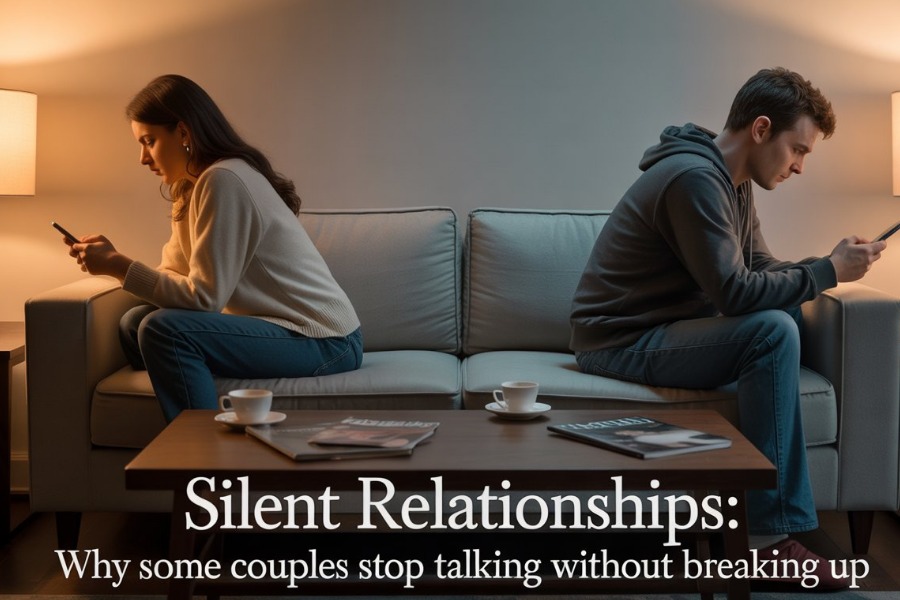Most relationships start off with lots of conversations, laughter, and a natural pace of connection. After a period of time, however, sometimes couples become physical space while sharing little to no words. This emotional silence does not happen suddenly, and partners wonder how they have gone from talking about everything to talking about nothing. Even though there is little or no verbal communication, the relationships continue, quietly indicating that the partners still share some type of connection/mood; although their connection/consanguinity has become less verbal; their relationship may still exist.
When Love Grows Silent
Many couples go through a turn in their relationship where they simply stop talking. But the relationship isn’t over. This often happens when a couple has been together for years, even with busy lives or past issues. One partner may assume the other knows when they are upset, while the other feels misunderstood and alone. Periods of emotional silence are not always about a lack of love they can stem from fatigue, comfort, or fear of the potential hurt that comes with expressing feelings.
I once heard a friend share her experience of living with her partner in a marriage that was like “roommates.” They watched television together, did the laundry, spent time together on travel, but they rarely had a real conversation. Their relationship was not over, but emotional silence was the emotional language they developed. She described it as living in a house of echoes. Feelings bounced off each other and never turned into voices. This is an example of how common, yet painfilled, that shift can be introverted into the shadow of silence.
Reasons Couples Remain in Relationships Despite Muted Communication
Silence, it feels, is always a mark of consent. Actually, for many couples, it is the love that they have shared in their past, the common share of identity, and the feeling of togetherness which go into holding them together. For others, the emotional silence of their relationship appears to be a safer alternative than fighting one another. They may even believe that talking leads to conflict, or more simply that dialogue will not make a difference. For some, silence is indicative that the couple hopes to have things “go back to normal” without any exchanges verbally.
At the heart of this quiet phase and period of reassurance is an unspoken depth of need. One partner may crave affection but fears asking, worried about rejection. The other struggles internally and withdraws rather than burdening their partner. This creates a slow cycle where both wait for the other to make the first move, leaving weeks of minimal communication.
Breaking the Silence Pattern
Silence still has a silver lining, it can’t be a thing that lasts forever. Couples can get out of the block by simply making deliberate steps. Even consultation, therapy, or shared activities as a starter can lead to a reopening of communication. Feeling expression even if it is clumsy helps to remove the silence. A short message such as “I miss our talks” may be an easy way to cross the distance between two people.
Understanding the emotional silence as a red flag instead of a death sentence is a way for couples to respond before negative feelings become too strong. Relationships that were once estranged could become familiar again by honest talking, empathy practicing, and intimacy rebuilding.
Key Points: Silent relationships don’t necessarily have to end in doom. They’re often an indicator of something significant that should be addressed. When couples practice patience, openness, and willingness, they can move past silence and regain the meaningful connection and warmth that first brought them together.




